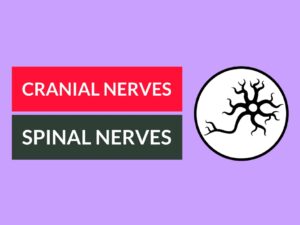The Difference Between Upper and Lower Motor Neurons
Motor neurons play a crucial role in transmitting signals from the brain to the muscles, allowing us to move and carry out daily activities. However, there are two distinct types of motor neurons – upper motor neurons and lower motor neurons. In this article, we will explore the characteristics, functions, and differences between these two types of neurons.
What are Upper Motor Neurons?
Upper motor neurons (UMNs) are located in the brain’s cerebral cortex, specifically in the motor cortex region. They originate from the primary motor area and descend to the brainstem or spinal cord, where they make connections with the lower motor neurons. These neurons play a vital role in controlling voluntary movements and executing complex motor tasks.
Examples of Upper Motor Neurons:
– Corticospinal tract neurons
– Corticobulbar tract neurons
– Corticopontine fibers
Uses of Upper Motor Neurons:
– Control voluntary muscle movements
– Coordinate complex motor tasks
– Regulate reflex activity
– Influence muscle tone
– Facilitate skilled movements
What are Lower Motor Neurons?
Lower motor neurons (LMNs) are located in the spinal cord or brainstem and connect with muscle fibers at the neuromuscular junction. They receive signals from the upper motor neurons and transmit these signals to the muscles, causing them to contract. Lower motor neurons are responsible for the execution of movements and are essential for muscle strength and coordination.
Examples of Lower Motor Neurons:
– Alpha motor neurons
– Gamma motor neurons
– Spinal lower motor neurons
– Cranial lower motor neurons
Uses of Lower Motor Neurons:
– Control precise muscle movements
– Generate muscle tone
– Enable reflexes and involuntary movements
– Mediate voluntary movements
– Transmit sensory information
Differences Between Upper and Lower Motor Neurons
| Difference Area | Upper Motor Neurons | Lower Motor Neurons |
|---|---|---|
| Location | Located in the cerebral cortex | Located in the spinal cord or brainstem |
| Connection | Make connections with lower motor neurons | Connect with muscle fibers |
| Origin | Originate from the primary motor area | Originate in the spinal cord or brainstem |
| Function | Control voluntary movements and complex motor tasks | Execute movements and ensure muscle strength |
| Effect | Fine-tune movement precision | Directly cause muscles to contract |
| Regulation | Regulate reflex activity and muscle tone | Generate muscle tone and enable reflexes |
| Pathway | Signals pass through corticospinal or corticobulbar tracts | Signals transmit from the spinal cord or brainstem |
| Role | Facilitate skilled movements | Mediate voluntary and involuntary movements |
| Location of Cell Bodies | Located in the primary motor cortex | Located in the ventral horns of the spinal cord or brainstem nuclei |
| Muscle Connection | Indirectly synapse with muscles | Directly connect with muscle fibers |
Conclusion:
In summary, upper motor neurons and lower motor neurons have distinct locations, functions, and connections within the nervous system. Upper motor neurons originate in the cerebral cortex and control voluntary movements, while lower motor neurons are located in the spinal cord or brainstem and execute movements, ensuring muscle strength and coordination.
People Also Ask:
1. What happens when upper motor neurons are damaged?
When upper motor neurons are damaged, it can lead to symptoms such as muscle weakness, impaired coordination, muscle spasms, and changes in reflexes.
2. How are upper and lower motor neurons connected?
Upper motor neurons connect with lower motor neurons at various levels of the brainstem and spinal cord, forming a neural pathway that enables the transmission of signals.
3. Can lower motor neurons work independently?
Lower motor neurons require input from upper motor neurons to function properly. However, they can also generate basic motor activity without direct input.
4. What disorders are associated with upper motor neuron dysfunction?
Disorders such as stroke, cerebral palsy, and multiple sclerosis can cause upper motor neuron dysfunction, resulting in various motor impairments.
5. Are lower motor neurons involved in involuntary movements?
Yes, lower motor neurons are responsible for both voluntary and involuntary movements. They play a crucial role in executing involuntary movements and reflexes.


